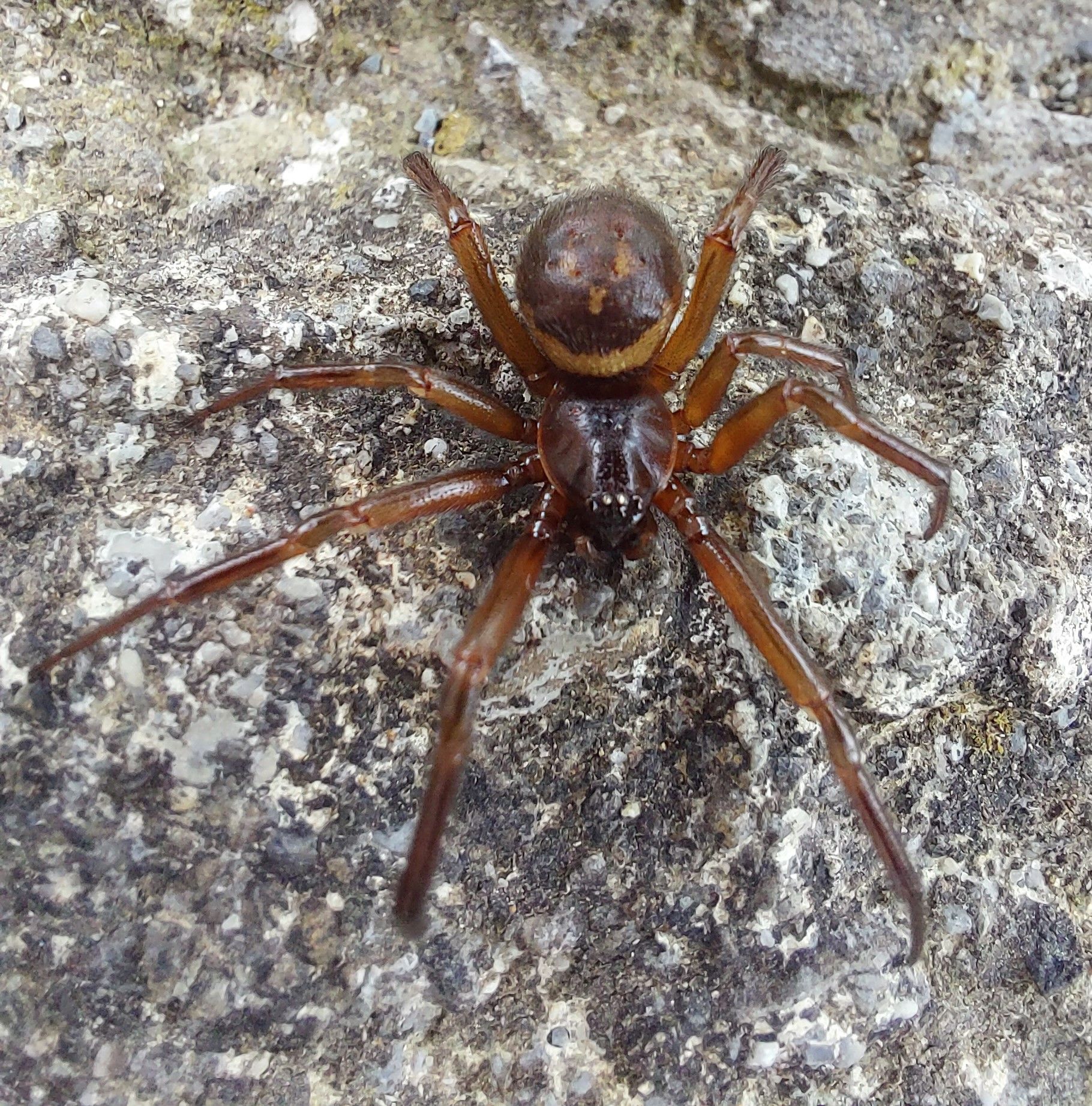BE afraid. Be very afraid. This spider is taking over the world. And it could be on a wall or under a sofa near you.
It was first spotted in Ireland in 1997, in Bray, Co Wicklow – but already the Canary Islands native has reached Belfast.
The noble false widow spider can bite and its bite is as sore as a bee sting. But it could even land you in hospital as some people suffer debilitating pain and body tremors. One toddler in Cork was bitten three times last year while lying on a mat and had to be hospitalised.
The false widow is officially one of the most dangerous spiders in western Europe. Thankfully its bite is not fatal – at least to us. But as the picture here shows, the native Irish pygmy shrew isn’t so lucky.
A few weeks ago Dúlra wrote about our smallest and oldest mammal suddenly being run out of the country by another intruder, the greater white-toothed shrew, which arrived here just 16 years ago. Now the tiny dallóg fraoigh is faced with another deadly foe, but this time one which is many times smaller.
A team at the University of Galway pitted the false widow spider against a wide range of opponents. It killed and ate 95 per cent of them, and its victims are known to include the rare Irish lizard.
With venom 230 times more poisonous than Irish species, bigger creatures were easily overcome. The pygmy shrew in the picture was spotted by a woman who found it entangled in silk outside her bedroom window. The animal was still alive in its shroud, with the relatively tiny spider’s toxic venom gradually incapacitating it.
The false widow has two-thirds the venom of the deadly true widow spider – but venom is an important resource and can take 16 days to produce. So, like a crazy doctor, the false widow never uses a drop more than it has to – meaning it just injects enough and no more to ensure its victim can’t escape.
The pygmy shrew was incapacitated with just enough venom to allow it to die a gradual death
It’s a horror story – but you’ll need to take a deep breath before reading on. The false widow has developed the ability to hoist large prey to a safe place so it can feed in peace without rivals. And so the woman watched as it hoisted the shrew on a silk rope into the rafters, where it fed on it for three days.
But because it has no jaws to chew on its prey, the false widow injects it with digestive juices from its stomach. It then waits for those juices to dissolve the muscles and organs of the paralysed prey, and it sucks everything up like a milkshake.
Its spread in Ireland has been phenomenal. But not just Ireland – it’s now in America, Chile and Germany. Scarily, although they’ve been found in Britain for a century, there wasn’t any real concern because their numbers were small and confined only to a couple of port towns. And from 1985 to 2010 there were practically no reports of large numbers anywhere.
Now scientists know this was just a ‘lag phase’ that happens with many invasive species. They were just secretly building up numbers to launch a proper invasion.
In Ireland, they seem to favour what’s called ‘street furniture’ – signposts, traffic lights, bus shelters and – fittingly – the railings of graveyards. But that’s just the beginning of their advance. In Lazio in Italy, once they dominated the city they moved into the surrounding countryside within just a few years of their arrival.
Already in Ireland, they easily outnumber native spiders in many place and they can produce three egg sacks a year, each with over 100 eggs, still laying them 18 months after mating. And they can live for five years. And finally, you’ll know it’s a false widow spider because it has a big, bulbous body with markings that look like... a skull?
Dúlra has no fear of spiders – they're all part of the miracle that is planet earth. If he sees a spider in the house, he’ll gently pick it up in a tissue and lead it to freedom outside while everyone else panics.
But from now on he’ll be checking for that skull ensign – and screaming like a banshee if he sees it.
• If you’ve seen or photographed anything interesting, or have any nature questions, you can text Dúlra on 07801 414804.







